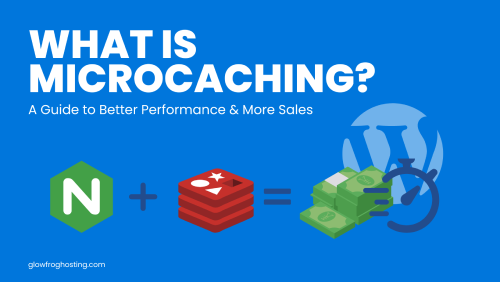To understand Micro-Caching, First, What is cache?
Cache is a static version of your website stored in a way that can be quickly delivered to each new visitor in the form of a copy rather than a new, individual, request.
This is helpful because WordPress is a PHP application. What you are seeing in the browser is actually HTML that was generated by PHP code and PHP workers on the server.
PHP workers are like little construction workers that must re-create your web pages every time someone new comes along. This process must happen each time a visitor visits your site.
Caching helps PHP workers to skip the construction process every time your site loads. This is why using cache helps to improve WordPress speed and performance, and the overall user experience.
Basically — it gives PHP workers a break and visitors can see a version of your pages that have already been constructed.
What is the Difference between Static and Dynamic Content?
Static content, as the name suggests, is content that doesn’t change. Like text, images or website styling.
Dynamic content on the other hand, is content that can changed based things like on user behavior, user location, or even the time and date.
A few examples of dynamic content are things like:
a visitors count, website ads, streaming media such as video, eCommerce features like the shopping cart data, user accounts, and so forth.
The Issue with Cache and Dynamic Site Content
Now that you have a basic understanding of what cache is, and the differences between Static and Dynamic site content, you can understand how caching dynamic content could be problematic.
This content is meant to change, so if dynamic content was served from cache, visitors would no longer receive that personalized, end user experience. Furthermore, they would see each others items in the shopping cart if you were running an eCommerce site!
To solve for this issue, most webhosts setup custom rules on the server to detect and bypass dynamic content in your site — and this is usually setup by default.
But what this means is that the PHP workers must get to work constructing this content for every new website visitor, each time they visit your site.
On busier sites, this can start to slow things down a bit.
Introducing GlowFrog Micro-Caching
At GlowFrog we’ve solved the problem of dynamic sites slower page loading speeds with our aggressive micro-caching technology and cache buckets.
Your users will still enjoy the same customized, dynamic site content with blazing fast loading times due to our micro-caching feature which stores dynamic site cache for up to 30 seconds and serves this cache to your visitors from separate cache buckets.
This means that your users still get the same, personalized experience, but at 2x the page loading speed!
Our smart ai-microcaching technology can tell when the content a user is requesting can be served from a cache bucket, or if a new request must be initiated.
Using Redis as an Object Cache for Faster Searching
Every WordPress website has a database where user data and other items are stored. These items are stored inside a database engine such as MySQL or MariaDB.
As users browse your site, this content is retrieved as needed by running what’s called MySQL queries in the background. A MySQL query is basically a search. Some databases can have hundreds of tables to search through.
Running a search each time a user requests something, especially if other users are conducting the same type of search, can have a negative impact on performance.
Redis works by caching the first query and returning a copy of the results to the user, rather than querying the database again for the same type of search.
This is similar to how caching of static pages works except this happens in the database.

Studies Show, Improved Performance Increases Sales
Twenty-five percent of online shoppers will abandon a page that doesn’t load within 4-6 seconds.
With our Redis add-on, now you can prevent loss of sales in your website and visitors can experience instantaneous search results!
Sign up for your GlowFrog account, receive a free migration and add Redis to your plan to amp up your sales!






















Leave a Reply